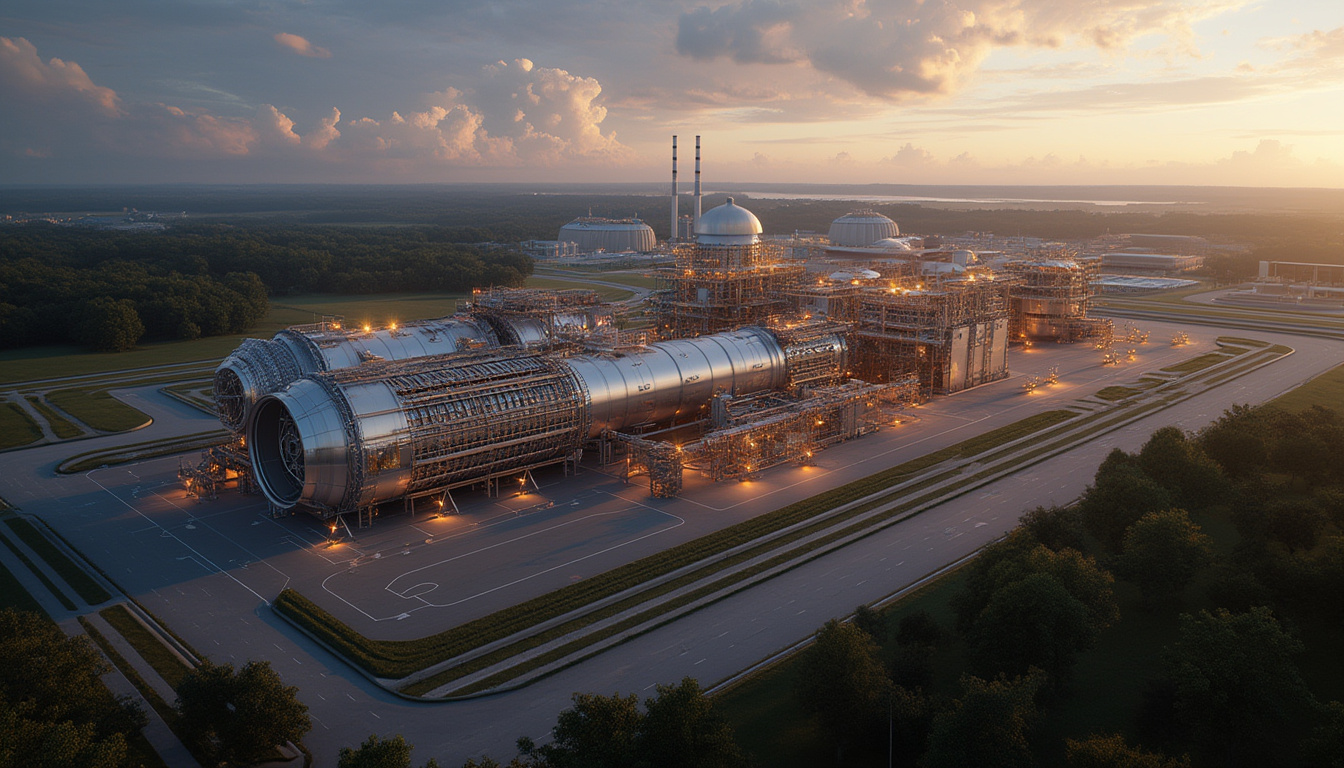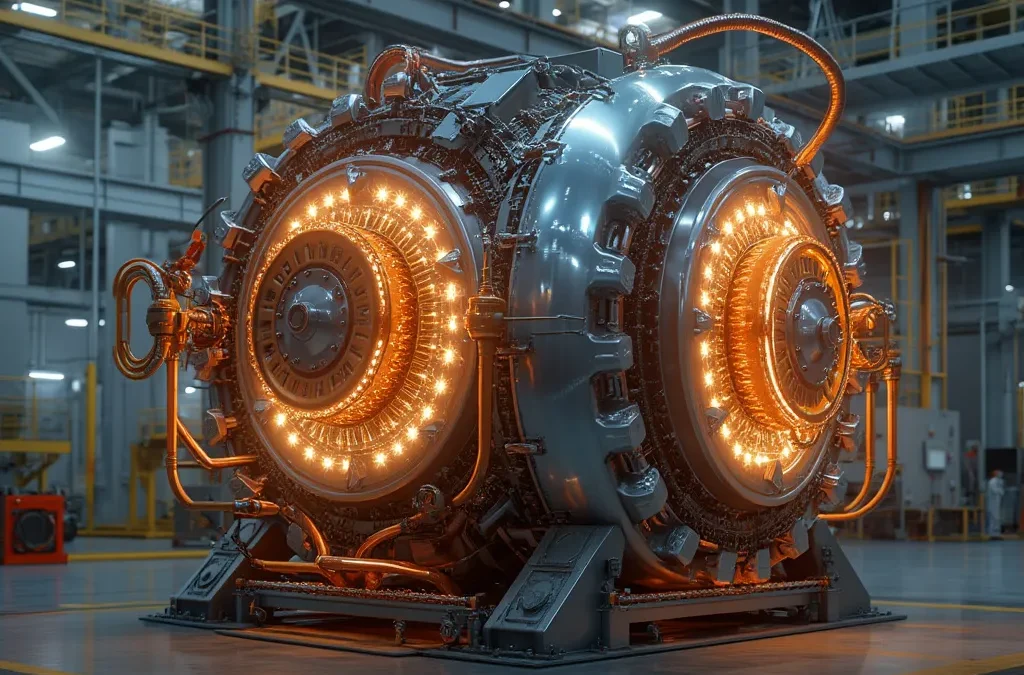This Startup Just Inked a Deal to Develop a Commercial Nuclear Fusion Plant
In a groundbreaking move, Type One Energy has announced a significant partnership to develop a commercial nuclear fusion plant, marking a major step forward in clean energy technology.
Partnership Details
Type One Energy is collaborating with the Tennessee Valley Authority (TVA) and the U.S. Department of Energy’s Oak Ridge National Laboratory (ORNL) to locate its stellarator fusion prototype, Infinity One, at the TVA’s Bull Run Fossil Plant in Clinton, Tennessee.
Project Infinity
Project Infinity aims to develop and commercialize economic fusion energy technologies. The construction of Infinity One aligns with Tennessee Governor Bill Lee’s vision to position the state as a national leader in clean energy, supported by the Governor’s Nuclear Energy Fund.
Funding and Vision
Type One Energy has secured $82.4 million in financing, reflecting global confidence in stellarator fusion technology. The project is expected to create over 300 high-paying jobs in Tennessee over five years.
Comparative Context
Competitor Commonwealth Fusion Systems (CFS) plans to build a grid-scale fusion power plant in Virginia, expected to generate 400 MW by the early 2030s, highlighting the growing interest in fusion technology.

Key Features of Infinity One
Infinity One is designed to validate crucial aspects of Type One Energy’s high-field stellarator fusion pilot plant. The prototype will focus on operational efficiency, reliability, maintainability, and affordability, ensuring that the technology can be scaled up for commercial use. By addressing these key factors, Type One Energy aims to overcome some of the longstanding challenges in fusion energy development.
Commercialization Goals
Type One Energy has set an ambitious target to make commercial fusion energy a reality within the next decade. The deployment of Infinity One is a cornerstone of the company’s *FusionDirect* commercialization program, which seeks to accelerate the transition to practical and economically viable fusion energy. This project is the first of its kind to bring together leaders from the technology, utility, and national laboratory sectors, marking a significant step toward achieving fusion energy at scale.
Partnership and Funding
Beyond the initial $82.4 million in seed financing, the project has received additional support through the Governor’s Nuclear Energy Fund. This funding underscores Tennessee’s commitment to becoming a hub for clean energy innovation. The partnership between Type One Energy, TVA, and ORNL leverages the strengths of each organization, combining cutting-edge technology, utility expertise, and world-class research capabilities.
Establishing a Headquarters
As part of its growth strategy, Type One Energy will establish its headquarters in East Tennessee. This move is expected to create over 300 high-paying jobs in the region within the next five years, contributing to local economic growth and positioning Tennessee as a leader in the clean energy sector.
Broader Implications
The success of Project Infinity could have far-reaching implications for the energy industry. By demonstrating the feasibility of stellarator fusion technology, Type One Energy aims to pave the way for widespread adoption of fusion energy, helping to meet global climate goals and ensuring energy security for future generations.

Conclusion
Type One Energy’s partnership with TVA and ORNL to develop the Infinity One stellarator fusion prototype represents a landmark moment in the pursuit of clean energy. With $82.4 million in funding and the support of Tennessee’s Nuclear Energy Fund, the project is well-positioned to accelerate the commercialization of fusion energy. By addressing operational efficiency, reliability, and affordability, Project Infinity aims to overcome longstanding challenges in fusion technology. The establishment of Type One Energy’s headquarters in East Tennessee, coupled with the creation of over 300 high-paying jobs, underscores the state’s commitment to becoming a leader in clean energy innovation. As the energy industry evolves, Type One Energy’s efforts could pave the way for widespread adoption of fusion energy, helping to meet global climate goals and ensuring a sustainable energy future.
Frequently Asked Questions (FAQ)
1. What is nuclear fusion energy?
Nuclear fusion energy is a clean and virtually limitless form of energy produced by replicating the process that powers the sun, where atomic nuclei combine to release vast amounts of energy.
2. How does the Infinity One prototype work?
Infinity One is a stellarator fusion prototype designed to validate operational efficiency, reliability, maintainability, and affordability, with the goal of scaling up for commercial use.
3. Where will the Infinity One prototype be located?
The Infinity One prototype will be located at the TVA’s Bull Run Fossil Plant in Clinton, Tennessee.
4. When is the Infinity One project expected to be operational?
While specific timelines for Infinity One’s operation are not detailed, Type One Energy aims to make commercial fusion energy a reality within the next decade.
5. How will this project impact Tennessee’s economy?
The project is expected to create over 300 high-paying jobs in Tennessee over five years, positioning the state as a leader in clean energy innovation and contributing to local economic growth.
6. What makes stellarator fusion technology different from other fusion approaches?
Stellarator fusion technology uses a twisted, three-dimensional magnetic field configuration to confine plasma, offering advantages in stability and scalability compared to other fusion approaches like tokamaks.
7. How does this project compare to other fusion energy initiatives?
Type One Energy’s project is unique in its collaboration with TVA and ORNL, combining utility expertise, national laboratory research, and cutting-edge technology to accelerate fusion energy development.
8. What are the broader implications of this project?
The success of Project Infinity could demonstrate the feasibility of stellarator fusion technology, paving the way for widespread adoption of fusion energy and helping to meet global climate goals.

